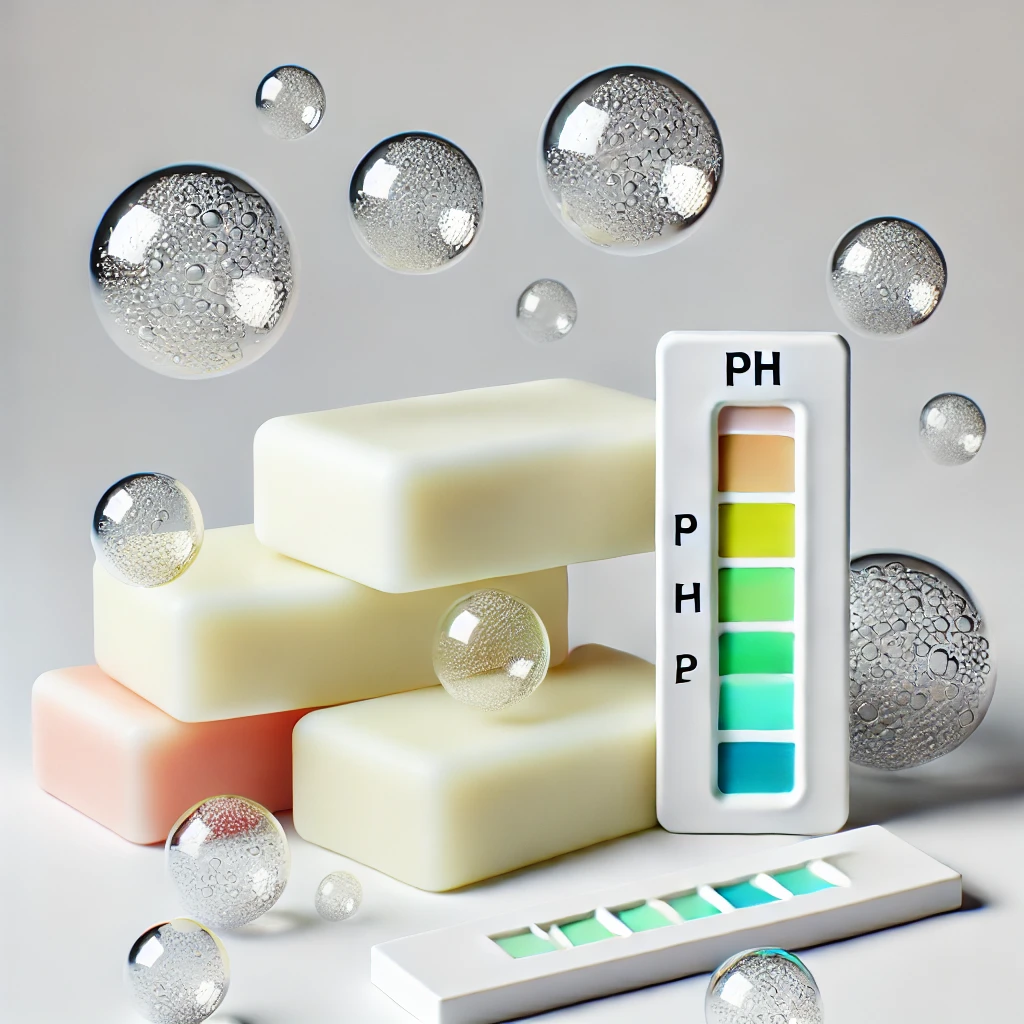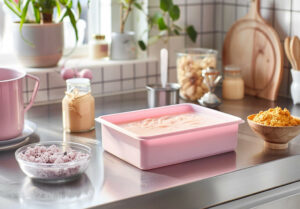pH in our Home Soaps: What is it?

If you make your own homemade soaps, you’ve probably heard of pH.
But what exactly is it, and why is it so important in soap making?
This article explains everything you need to know about the pH of your homemade soaps, how to measure it, and what to do if the pH of your soap is not optimal.
1. What is pH?
pH, or hydrogen potential, is a chemical measurement that determines the acidity or alkalinity of a solution on a scale of 1 to 14 :
- A pH of 1 to 6 indicates an acidic solution.
- A pH of 7 is neutral.
- A pH of 8 to 14 indicates an alkaline or basic solution.
In soapmaking, the correct pH is crucial to ensure that soap is both effective for cleansing and gentle on the skin.

2. Why is pH important in soap-making?
When you make homemade soap, the mixture of caustic soda and oils creates a chemical reaction called saponification.
This reaction must be balanced to prevent your soap from being too acidic or too basic. Too high a pH could be irritating to the skin, while too low a pH could indicate that saponification is not complete, rendering the soap ineffective for cleaning.
As a general rule, a well-formulated and well-curated soap should have a pH between 8 and 10. This level guarantees a soap that cleans well while being safe and gentle on the skin.
3. How to measure the pH of your homemade soap?
Checking the pH of your soap is a crucial step after the cure (drying period) to ensure that your product is ready for use. Here’s how to do it:
- Soap dilution: Take a small piece of your finished soap and dilute it in demineralized water. Use approximately 1% water by weight. For example, for 1 gram of soap, use 100 ml of water.
- Water heating: Heat demineralized water to approx. 40°C. We recommend boiling the water beforehand to remove any impurities.
- Mixing: Add the soap bar to the hot water and stir until completely dissolved.
- pH test: Soak a pH test strip in the solution for a few seconds. Then take it out and compare the color obtained with the scale provided on the strip packaging.
At Planète Savons, we offer easy-to-use pH test strips, available on our website.
They allow you to quickly and accurately measure the pH of your homemade soaps.
4. What to do if the pH is wrong?
Sometimes, after the cure, you may find that the pH of your soap is still too high, above 11. Here’s what you can do:
- Leave to cure longer: If the pH is slightly above 10, leave your soap to cure for a few more weeks. The pH may drop further over time, and your soap may reach a safe level.
- Reuse: If after several more weeks the pH remains high, we advise against using this soap on your skin. However, don’t throw it away! You can recycle it for cleaning. Soap with a high pH can be effective as a surface cleaner.
Conclusion
Controlling pH is an essential step in making homemade soaps to ensure that your final product is safe, gentle on the skin and effective. By following the measuring steps and taking the necessary precautions, you can be sure that your homemade soaps are of the highest possible quality.
At Planète Savons, we support you in this process with practical tools such as our pH test strips, available on our website. Don’t forget to test the pH of your soaps after the cure, so you can enjoy your creations to the full in complete safety.



0 Comments